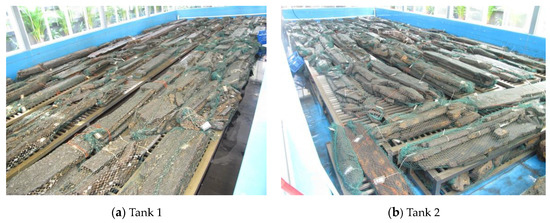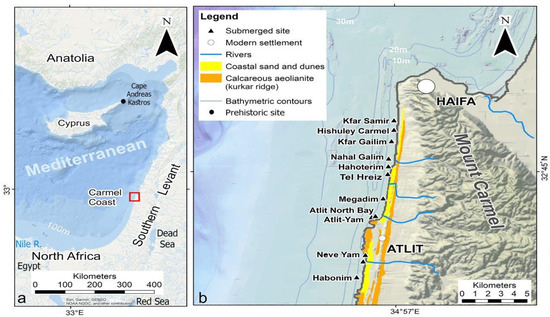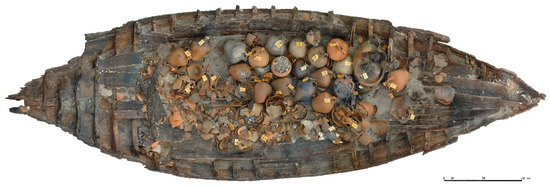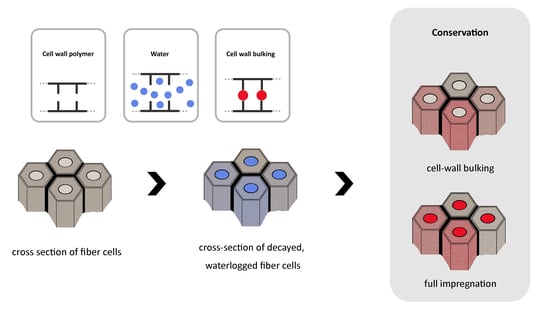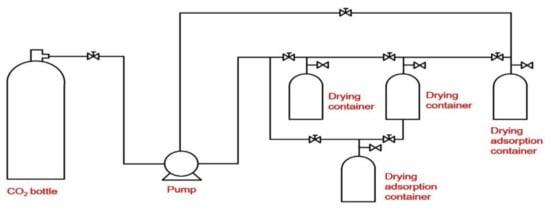Historical Wood: Structure, Properties and Conservation
A topical collection in Forests (ISSN 1999-4907).
Viewed by 14477
Share This Topical Collection
Editor
 Dr. Magdalena Broda
Dr. Magdalena Broda
 Dr. Magdalena Broda
Dr. Magdalena Broda
E-Mail
Website
Collection Editor
Department of Wood Science and Thermal Techniques, Faculty of Forestry and Wood Technology, Poznań University of Life Sciences, Poznań, Poland
Interests: wood structure and composition; wood characterisation; wood conservation and preservation; waterlogged archaeological wood; structure–function relations; wood decay; organosilicons in wood conservation
Special Issues, Collections and Topics in MDPI journals
Topical Collection Information
Dear Colleagues,
Nowadays, the majority of research concentrates on applied science that regards issues crucial from the socio-economical perspective, such as new functional materials and super-efficient technologies, clean energy, improvement of human health or tackling climate change. However, we cannot forget about our culture and history, which define our humanity. Wooden cultural heritage is an integral part of it. Therefore, we must protect it, save it from oblivion and preserve it for future generations.
This Topical Collection will present reliable modern techniques for characterization of the wood structure, properties and degree of its degradation, report on new methods for conservation of historical wooden artefacts, and discuss problems and doubts related to all aspects of conservation and re-conservation of wooden cultural heritage. We highly encourage contributions to this Topical Collection from all relevant fields in the form of both original and review articles.
Dr. Magdalena Broda
Collection Editor
Manuscript Submission Information
Manuscripts should be submitted online at www.mdpi.com by registering and logging in to this website. Once you are registered, click here to go to the submission form. Manuscripts can be submitted until the deadline. All submissions that pass pre-check are peer-reviewed. Accepted papers will be published continuously in the journal (as soon as accepted) and will be listed together on the collection website. Research articles, review articles as well as short communications are invited. For planned papers, a title and short abstract (about 100 words) can be sent to the Editorial Office for announcement on this website.
Submitted manuscripts should not have been published previously, nor be under consideration for publication elsewhere (except conference proceedings papers). All manuscripts are thoroughly refereed through a single-blind peer-review process. A guide for authors and other relevant information for submission of manuscripts is available on the Instructions for Authors page. Forests is an international peer-reviewed open access monthly journal published by MDPI.
Please visit the Instructions for Authors page before submitting a manuscript.
The Article Processing Charge (APC) for publication in this open access journal is 2600 CHF (Swiss Francs).
Submitted papers should be well formatted and use good English. Authors may use MDPI's
English editing service prior to publication or during author revisions.
Keywords
- waterlogged wood
- archaeological wood
- wood conservation
- wooden artefacts
- wood degradation
- wood structure
- historical wood
Published Papers (8 papers)
Open AccessArticle
Extraction of Soluble Salts and Iron Sulfides from the Wood of the “Huaguangjiao I” Shipwreck
by
Xueyu Wang and Naisheng Li
Viewed by 670
Abstract
Shipwreck wood often contains soluble salts and iron sulfides, which pose a threat to its stability. Therefore, desalination treatment must be carried out during protection. In this study, deionized water and ethylene diamine tetraacetic acid disodium salt (EDTA-2Na) solution were used to extract
[...] Read more.
Shipwreck wood often contains soluble salts and iron sulfides, which pose a threat to its stability. Therefore, desalination treatment must be carried out during protection. In this study, deionized water and ethylene diamine tetraacetic acid disodium salt (EDTA-2Na) solution were used to extract soluble salts and iron sulfides from the 511 wood components of the “Huaguangjiao I” shipwreck. The extraction lasted for 1120 days, during which extraction progress was monitored by measuring the electrical conductivity and iron content of the soaking solution. The results indicated that the extraction experiment reached its endpoint when the conductivity of the soaking solution was maintained at 80~100 μs/cm and the iron content was maintained at 8~15 mg/L. More than 143.35 kg of iron were extracted from the wood of the “Huaguangjiao I” shipwreck. After extraction, the content of soluble salt ions in the wood were less than 5 μg/g, with an iron content below 5%. The wood has returned to its original color and with a certain degree of degradation. “Huaguangjiao I” was the first large-scale marine shipwreck to complete the desalination treatment of all wooden components. This study provides guidance for the desalination treatment of large-scale wooden shipwrecks.
Full article
►▼
Show Figures
Open AccessArticle
The Unseen Record: Ninth–Seventh Millennia Cal. BP Wooden and Basketry Objects from Submerged Settlements off the Carmel Coast, Israel
by
Danny Rosenberg, Ehud Galili and Dafna Langgut
Viewed by 1468
Abstract
Wood and basketry artefacts rarely survive in the prehistoric record since they require exceptional conditions for preservation; as a result, the current knowledge about when and how prehistoric societies used these basic organic raw materials is limited. Focusing on the southern Levant, we
[...] Read more.
Wood and basketry artefacts rarely survive in the prehistoric record since they require exceptional conditions for preservation; as a result, the current knowledge about when and how prehistoric societies used these basic organic raw materials is limited. Focusing on the southern Levant, we discuss for the first time a collection of 16 late prehistoric organic artefacts found in underwater research conducted in the last forty years off the coast of the Carmel Ridge (Israel). The waterlogged finds, including bowls, shafts, a wedge, a trough, a pitchfork, logs, a mat, and a basket, were found at sites spanning from the Pre-Pottery Neolithic to Middle Chalcolithic periods (ninth–seventh millennia cal. BP), constituting an unprecedented record of prehistoric wood and other perishable materials, providing us with new information about raw material preferences and manufacturing technologies.
Full article
►▼
Show Figures
Open AccessArticle
Analyses of Sulfur and Iron in Waterlogged Archaeological Wood: The Case of Polyethylene-Glycol-Treated Yenikapı 12 Shipwreck
by
Aslı Gökçe Kılıç, Namık Kılıç and Donna C. Arnold
Viewed by 1398
Abstract
The Yenikapı (YK) 12 shipwreck is 1 of 37 shipwrecks found at Yenikapı, Istanbul. This merchantman has been dated to AD 672–876 by radiocarbon analyses. The conservation of YK 12, which was assembled with iron nails, was completed with the pre-impregnation of polyethylene
[...] Read more.
The Yenikapı (YK) 12 shipwreck is 1 of 37 shipwrecks found at Yenikapı, Istanbul. This merchantman has been dated to AD 672–876 by radiocarbon analyses. The conservation of YK 12, which was assembled with iron nails, was completed with the pre-impregnation of polyethylene glycol (PEG) and using vacuum freeze-drying processes. However, after conservation, dust formation was observed on some wooden parts of the shipwreck during storage. In this study, iron–sulfur-related problems detected in the woods of YK 12 were evaluated. We analysed samples taken from YK 12 to study the sulfur and iron content in woods from oak (
Quercus), walnut (
Juglans), and hornbeam (
Carpinus), representing taxa with different wood properties. Fourier-transform infrared spectroscopy (FTIR) analyses, X-ray diffraction (XRD), and pH measurements were conducted on five samples. The results of these studies showed that the dust consisted of wood particles, PEG, and hydrated iron sulfates, such as FeSO
4·4H
2O and FeSO
4·7H
2O. Additionally, one sample included SiO
2, whilst another exhibited a low pH value. These findings highlight the importance of optimum ambient conditions for the storage and display of these shipwrecks in order to prevent the irreversible degradation of YK 12 and other recovered shipwrecks.
Full article
►▼
Show Figures
Open AccessArticle
A Multi-Parametric Investigation on Waterlogged Wood Using a Magnetic Resonance Imaging Clinical Scanner
by
Sveva Longo, Federica Egizi, Valeria Stagno, Maria Giovanna Di Trani, Gianni Marchelletta, Tommaso Gili, Enza Fazio, Gabriele Favero and Silvia Capuani
Cited by 6 | Viewed by 1792
Abstract
In cultural heritage conservation science, moisture content (MC) is an essential factor to determine. At the same time, it is essential to choose non-destructive and non-invasive approaches for more sustainable investigations and make them safe for the environment and the sample. The question
[...] Read more.
In cultural heritage conservation science, moisture content (MC) is an essential factor to determine. At the same time, it is essential to choose non-destructive and non-invasive approaches for more sustainable investigations and make them safe for the environment and the sample. The question addressed in this work concerns the possibility and the opportunity to investigate waterlogged wood by using nuclear magnetic resonance imaging (MRI) clinical scanners to carry out non-destructive volumetric diagnostics. In this study, MRI, the most important non-invasive medical imaging technique for human tissue analysis, was applied to study archaeological waterlogged wood samples. This type of archaeological material has a very high moisture content (400%–800%), thus, it is an ideal investigative subject for MRI which detects water molecules inside matter. By following this methodology, it was possible to obtain information about water content and conservation status through a
T1,
T2, and
T2* weighted image analysis, without any sampling or handling, and the samples were directly scanned in the water where they were stored. Furthermore, it permited processing 3D reconstruction, which could be an innovative tool for the digitalization of marine archaeological collections. In this work, 16 modern species of wood and a waterlogged archaeological wood sample were studied and investigated using a clinical NMR scanner operating at 3T. The results were compared with X-ray computed tomography (CT) images, as they had already been used for dendrochronology. The comparison highlights the similar, different, and complementary information about moisture content and conservation status in an all-in-one methodology obtainable from both MRI and CT techniques.
Full article
►▼
Show Figures
Open AccessArticle
Desferrioxamine B: Investigating the Efficacy of Hydrogels and Ethanol Gels for Removing Akaganeite and Maghemite from Dry Wooden Substrates
by
Stavroula Rapti, Stamatis Boyatzis, Shayne Rivers, Athanasios Velios and Anastasia Pournou
Viewed by 1389
Abstract
Cultural heritage (CH) wooden artifacts are often stained by iron oxides/hydroxy-oxides, which may have detrimental effects on wood. Their removal is a common conservation practice, and it is usually achieved with non-eco-friendly chelators, such as ethylene diamine tetra acetic acid (EDTA) and diethylene
[...] Read more.
Cultural heritage (CH) wooden artifacts are often stained by iron oxides/hydroxy-oxides, which may have detrimental effects on wood. Their removal is a common conservation practice, and it is usually achieved with non-eco-friendly chelators, such as ethylene diamine tetra acetic acid (EDTA) and diethylene triamine penta acetic acid (DTPA). Siderophores are green materials that have been recently explored as chelators, given the currently growing environmental concerns. This work investigated desferrioxamine B (DFO-B), a promising siderophore that has not been adequately studied for its potential in removing ferric oxides/hydroxy-oxides from dry CH wooden substrates. Mock-ups of maple (
Acer platanoides L.) were artificially stained with akaganeite and maghemite, and DFO-B was employed via hydrogels (pH: 6.5 and 8.6) and ethanol gels. The chelator efficacy was assessed using Energy-Dispersive Spectroscopy (EDS), Attenuated Total Reflection–Fourier Transform Infrared Spectroscopy (ATR-FTIR), Scanning Electron Microscopy (SEM) and colorimetry. The hydrogels’ impact on the wood was also assessed using ATR-FTIR and colorimetry. The obtained results demonstrate that the most effective DFO-B formulation was the alkaline hydrogel (pH 8.6), followed by the acidic (pH 6.5) hydrogel and the DFO-B ethanol gel. No differences in wood chemistry or color were recorded when using pH 6.5 or 8.6. The DFO-B ethanol gels were also proven to be potential alternatives to hydrogels for use with water-sensitive CH substrates.
Full article
►▼
Show Figures
Open AccessFeature PaperArticle
Imaging and Assessment of the Microstructure of Conserved Archaeological Pine
by
Ingrid Stelzner, Jörg Stelzner, Damian Gwerder, Jorge Martinez-Garcia and Philipp Schuetz
Cited by 3 | Viewed by 2585
Abstract
Impressive wooden objects from past cultures can last for centuries or millennia in waterlogged soil. The aim of conservation is to bring the more or less degraded waterlogged archaeological wooden (WAW) finds to a stable state without altering the wood structure through shrinkage,
[...] Read more.
Impressive wooden objects from past cultures can last for centuries or millennia in waterlogged soil. The aim of conservation is to bring the more or less degraded waterlogged archaeological wooden (WAW) finds to a stable state without altering the wood structure through shrinkage, collapse, and deformation. In this study, the most used methods in the conservation practice, such as the alcohol-ether resin method, conservation with the melamine formaldehyde resin Kauramin 800, a mixture of lactitol and trehalose, saccharose, silicone oil, and three different conservation methods with polyethylene glycol followed by freeze-drying were tested. The effects of the conservation agents on the structure of archaeological pine were investigated using optical light microscopy (reflected light microscopy, RLM), scanning electron microscopy (SEM), and X-ray computed tomography (XCT). Through the examinations, most conservation agents could be identified in the structure and their impact on conservation could be analyzed. In particular, it was possible to trace the incorporation of the conservation agents in the lumen, which was influenced by factors, such as wood anatomy, degree of degradation, and drying process. Differences in the mode of action of the conservation processes could also be identified in the composition of the cell wall tracheids.
Full article
►▼
Show Figures
Open AccessArticle
King Khufu’s Second Boat: Scientific Identification of Wood Species for Deckhouse, Canopy, and Forecastle
by
Ahmed Abdrabou, Eissa Zidan, Akiko Nishisaka, Hiromasa Kurokochi and Sakuji Yoshimura
Viewed by 1974
Abstract
Very little published information is available on the scientific identification of wood species used in the construction of boats in ancient Egypt. This paper deals with the scientific identification of wood species used in the construction of the deckhouse, canopy, and forecastle of
[...] Read more.
Very little published information is available on the scientific identification of wood species used in the construction of boats in ancient Egypt. This paper deals with the scientific identification of wood species used in the construction of the deckhouse, canopy, and forecastle of King Khufu’s second wooden boat (4th Dynasty—Old Kingdom) in detail. This paper also discusses the principal technological characteristics of the identified woods, considering specifically their utilization for construction of the deckhouse, canopy, and forecastle. Almost all the woods used in the boat’s deckhouse, canopy, and forecastle were made of two imported species of wood (
Cedrus libani A.Rich. and
Juniperus sp.), with two native species (
Ziziphus spina-christi (L.)
Willd. and
Vachellia sp.) also identified. The analysis most surprisingly revealed the presence of
Ziziphus spina-christi (L.)
Willd. in 25% of the analyzed forecastle samples, which was discovered for the first time for making cross beams in the construction of boats in ancient Egypt. Another intriguing aspect of the boat’s construction is the presence of
Juniperus sp., which surprisingly showed that almost 85% of the analyzed samples were
Juniperus sp., used in the deckhouse’s boards, frames, and cross beams. The data let us examine the specific employment of the wood species used in the parts of the boat, which evidenced that the identified woods were suitably used for the construction of the different parts of the deckhouse, canopy, and forecastle of the boat.
Full article
►▼
Show Figures
Open AccessArticle
Consolidation and Dehydration of Waterlogged Archaeological Wood from Site Huaguangjiao No.1
by
Xinyou Liu, Xinwei Tu, Wanrong Ma, Changjun Zhang, Houyi Huang and Anca Maria Varodi
Cited by 4 | Viewed by 1454
Abstract
The Huaguangjiao I is an ancient Chinese wooden shipwreck from the South Song Dynasty (AD 1127–1279) discovered in the South China Sea in 1996. The first phase of its conservation, desalination and desulfurization, was completed in 2016. In this paper, three archaeological wood
[...] Read more.
The Huaguangjiao I is an ancient Chinese wooden shipwreck from the South Song Dynasty (AD 1127–1279) discovered in the South China Sea in 1996. The first phase of its conservation, desalination and desulfurization, was completed in 2016. In this paper, three archaeological wood samples exhibiting different degrees of deterioration from Huaguangjiao No. 1 were consolidated with PEG-4000 and dehydrated via freeze drying and supercritical CO
2 drying methods. The dimensional stability, hygroscopicity, Fourier transform infrared spectroscopy (FTIR), and scanning electron microscopy (SEM) were used to evaluate the effects of consolidation and dehydration. The results showed that PEG4000 was an efficient consolidation material that also effectively decreased shrinkage during dehydration. Furthermore, both vacuum-freeze and supercritical CO
2 drying were efficient methods for treating waterlogged archaeological wood. After PEG4000 impregnation, the shrinkage percentage of the waterlogged archaeological wood became slightly lower than sound wood. The moisture absorption of the experimental specimens ranged within 3.35%–4.53%, and they comprised 50% sound wood, resulting in a marked improvement in dimensional stability. FTIR spectra indicated that impregnation improved wood dimensional stability by reducing hydrophilic groups. These results show that this method can effectively treat waterlogged wood for preservation purposes.
Full article
►▼
Show Figures





